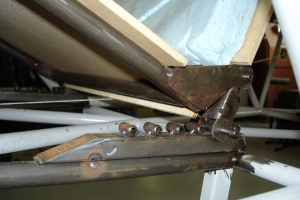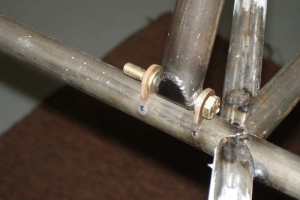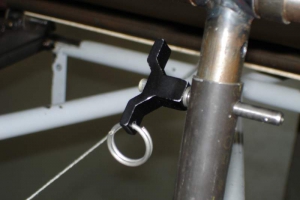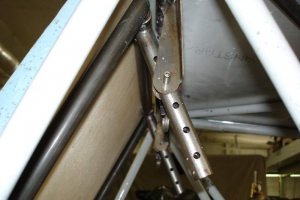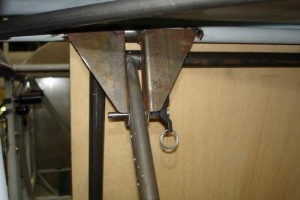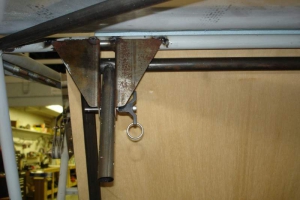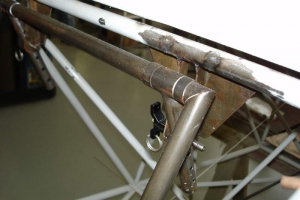December 2004
Article by Mike Whaley
Here are some more details about the adjustable seats.
- Front seat.
- The rear seat adjusts in several directions.
- The rear seat.
- The front base of the front seat is fixed, but the top side of this strut is adjustable providing for a large range of motion.
- This is the top of the front seat back. The locking pins are easily available and sturdy, and won’t release until you depress the button on the top.
- The top of the rear seat back can be moved forward so that shorter pilots can get closer to the rudder and instruments.
- This shot shows the top of the rear seat frame, as viewed from the rear of the aircraft.
- Access to this area should be extremely easy through the hinged side panels.
- Hinges are simple and are made of 4130 tube.
- For extra safety, each pin will be attached to the nearby structure with a lanyard to prevent it from getting dropped or lost.
- There is many inches worth of adjustment available. You could extend the concept even further if you wanted to and provide for finer adjustments or an even larger range of motion, but that’s probably unnecessary.
- The angle of the front seat pan is determined by a combination of the height of the front support, and the fore-aft position of the whole seat.
- While not terribly complicated, this is the most complex part of the rear seat assembly.
- The rear seat’s back panel will only extend down to the cross-piece. This will allow the seat pan to be raised up if needed.


